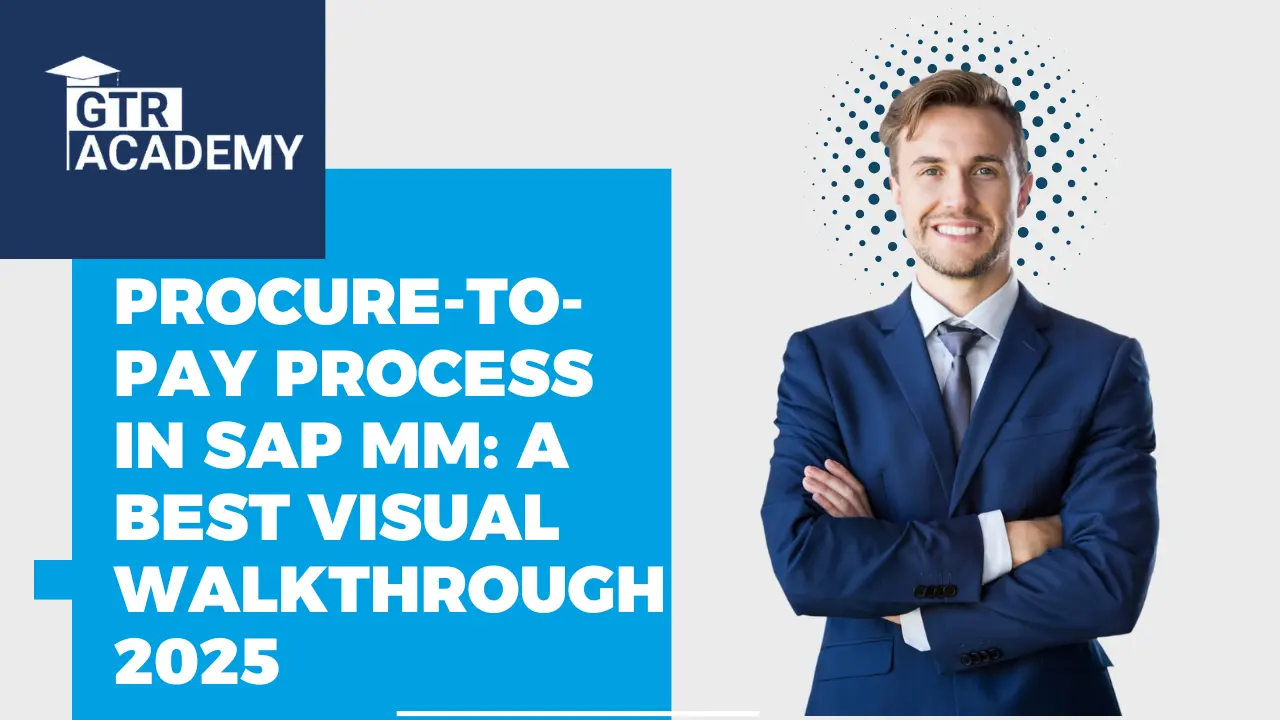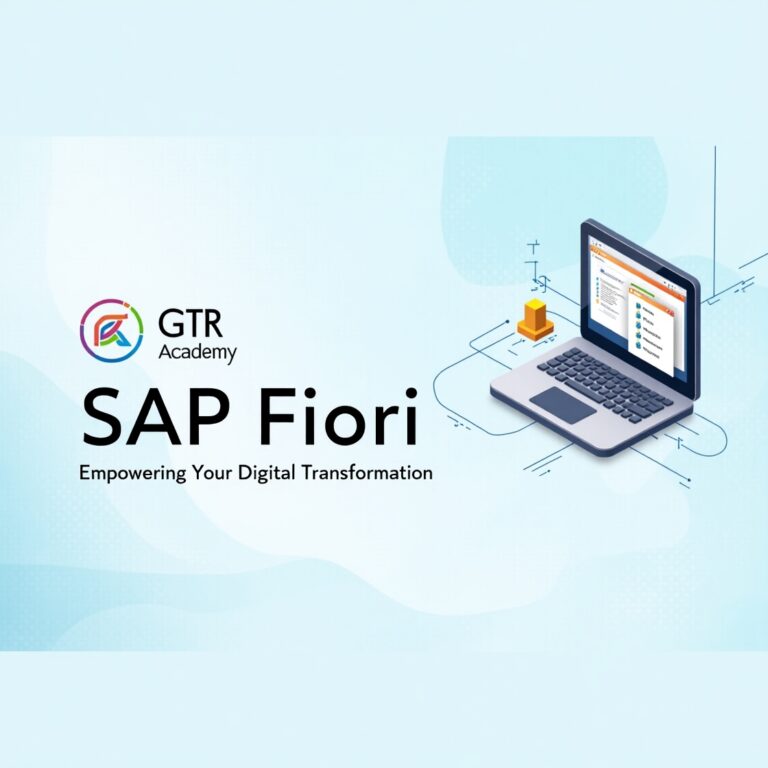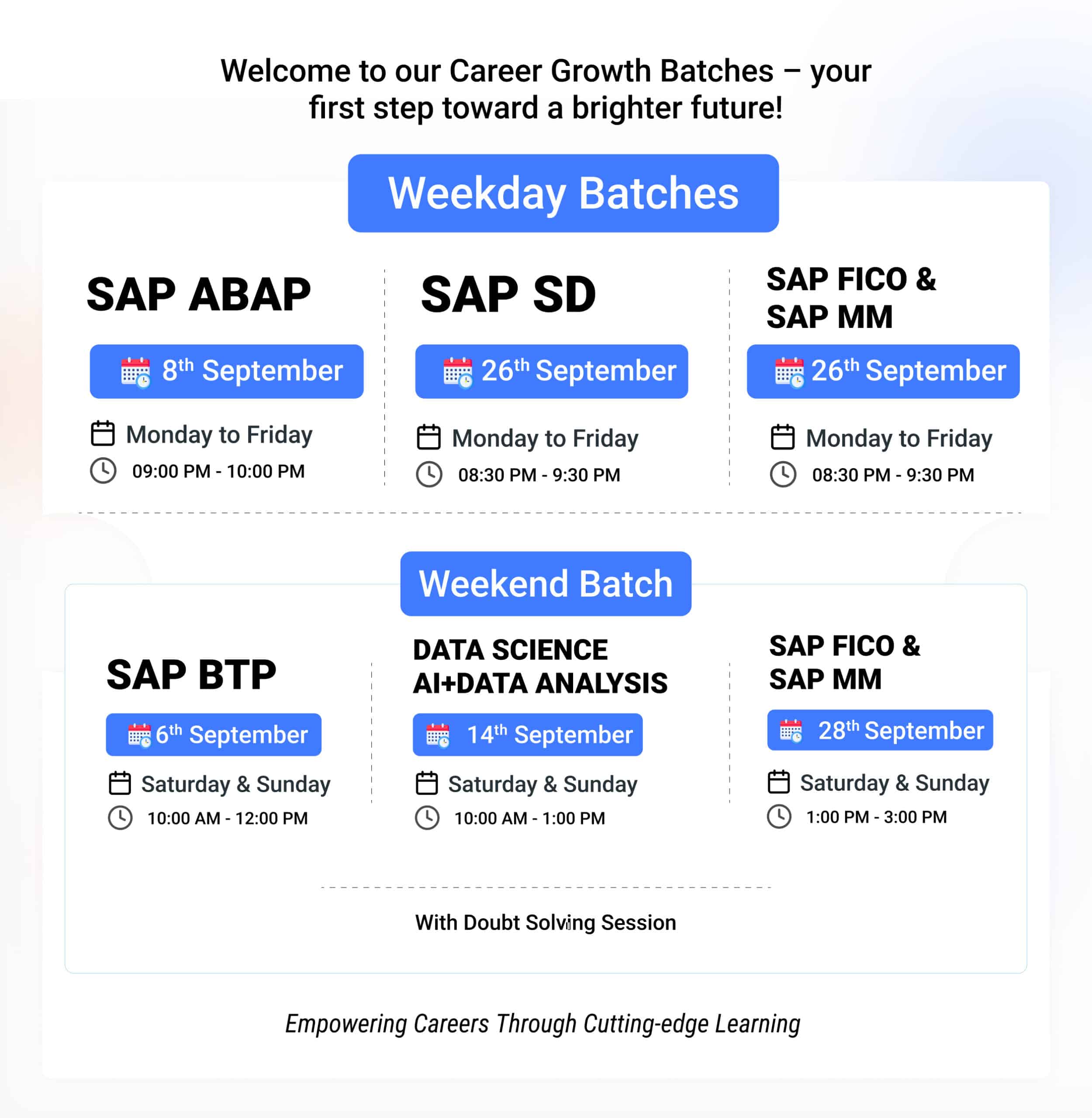Procure-to-Pay Process in SAP MM: A Best Visual Walkthrough 2025
The Procure-to-Pay Process in SAP MM is a critical workflow that links procurement and finance. It streamlines the acquisition of goods and services while ensuring accurate financial accounting, timely payments, and smooth vendor interactions.
A well-implemented P2P cycle impacts cash flow, supplier relationships, and inventory accuracy. From initiating a purchase request to making payments, SAP MM automates much of the workflow, reducing manual errors and improving operational efficiency.
Understanding the end-to-end P2P process is essential for SAP MM consultants, procurement professionals, and finance teams. In this article, we provide a step-by-step walkthrough of the P2P cycle, highlight common challenges, and share best practices for 2025.

Step-by-Step Process
The Procure-to-Pay cycle in SAP MM consists of five main stages. Each stage ensures that purchases are properly requested, authorized, received, verified, and paid.
1. Purchase Requisition (ME51N)
The process begins with a Purchase Requisition (PR). This internal document represents a request for goods or services within an organization. It is not legally binding but serves as a signal to the procurement team that a need exists.
Key points:
-
Employees or departments create a PR using ME51N.
-
The system captures details like material type, quantity, delivery date, and account assignment.
-
Approval workflows ensure that only authorized requests proceed further.
A properly managed PR ensures that procurement aligns with business needs and budget constraints. Delays or missing information in PRs can impact the entire P2P cycle.
2. Purchase Order (ME21N)
Once the PR is approved, the procurement team converts it into a Purchase Order (PO). This is a legally binding document sent to the vendor, specifying the exact materials, quantity, price, and delivery terms.
Key points:
-
Created using ME21N in SAP MM.
-
Incorporates information from the PR and vendor master data.
-
Ensures compliance with company policies and contractual agreements.
The PO stage formalizes the commitment to the vendor. Errors here, such as wrong pricing or incorrect material codes, can create issues downstream in goods receipt and invoice verification.
3. Goods Receipt (MIGO)
After the vendor delivers the materials, the next step is Goods Receipt (GR). This step confirms the delivery, updates inventory, and posts accounting entries in SAP.
Key points:
-
Performed using MIGO transaction.
-
Checks delivered quantity against the PO.
-
Automatically updates stock and triggers financial postings.
Accurate GR postings are essential for inventory management. Mistakes, such as wrong movement types or incorrect quantities, can lead to stock mismatches and financial discrepancies.
4. Invoice Verification (MIRO)
Invoice verification is a critical checkpoint in the P2P process. Using MIRO, the system matches the invoice with the PO and goods receipt to ensure accuracy before payment.
Key points:
-
Confirms that the vendor invoice aligns with agreed prices and delivered quantities.
-
Captures taxes, discounts, and other adjustments.
-
Flags discrepancies such as overbilling or missing information.
Proper invoice verification prevents payment errors, avoids duplicate payments, and maintains supplier trust.
5. Payment Processing (F110)
The final step in the P2P cycle is Payment Processing. Using F110, finance executes vendor payments according to agreed terms.
Key points:
-
Ensures timely payments to maintain good supplier relationships.
-
Integrates with cash management and accounts payable modules.
-
Generates payment proposals and executes bank transfers.
Efficient payment processing completes the P2P loop, linking procurement and finance in a seamless workflow.
Common Challenges in P2P
Even with SAP MM automation, organizations face several challenges in the P2P process:
-
PR Approval Delays: Manual approvals or missing authorizations can slow down the entire procurement cycle.
-
Invoice Blocks from Minor Discrepancies: Small differences between PO, GR, and invoices can create payment blocks, requiring manual intervention.
-
GR Errors Due to Incorrect Data: Wrong material codes, movement types, or quantities during goods receipt can cause stock and financial mismatches.
Addressing these challenges requires a combination of system configuration, process standardization, and employee training.
Best Practices for an Efficient Procure-to-Pay Cycle
Implementing the following best practices can significantly improve P2P efficiency in SAP MM:
-
Automate Workflows
Automated approval workflows reduce manual delays in PR and PO approvals. Using SAP Fiori apps or custom workflow configurations ensures faster processing and fewer errors. -
Use Tolerance Limits
Setting tolerance limits for invoice verification in SAP prevents minor discrepancies from blocking payments. This allows finance to process invoices faster while still maintaining control over larger deviations. -
Integrate Vendor Portals
Vendor portal integration facilitates smooth data exchange. Vendors can submit POs, GRs, and invoices directly, reducing manual entry, errors, and communication delays. -
Regular Training for Users
Continuous training ensures that employees understand transaction codes like ME51N, ME21N, MIGO, MIRO, and F110, reducing human errors and improving process compliance. -
Monitor and Audit P2P Performance
Regular audits of the P2P process help identify bottlenecks, recurring errors, and compliance issues. This data-driven approach allows companies to continuously improve their procurement cycles.
Top 10 FAQs on Procure-to-Pay Process in SAP MM
1. What is the Procure-to-Pay (P2P) process in SAP MM?
The P2P process in SAP MM is an end-to-end workflow that connects procurement and finance. It covers the lifecycle from purchase requisition to vendor payment, ensuring accurate inventory and financial records.
2. Which SAP transaction codes are used in the P2P cycle?
Key transaction codes include ME51N (Purchase Requisition), ME21N (Purchase Order), MIGO (Goods Receipt), MIRO (Invoice Verification), and F110 (Payment Processing).
3. Why is P2P important for businesses?
A well-managed P2P process improves cash flow, ensures timely supplier payments, reduces errors, and strengthens supplier relationships, which are essential for smooth operations.
4. How can PR approval delays be avoided?
Automating approval workflows in SAP MM ensures faster processing of purchase requisitions, reducing bottlenecks and preventing delays in procurement.
5. What causes invoice blocks in SAP MM?
Invoice blocks usually occur due to minor discrepancies between the purchase order, goods receipt, and vendor invoice. These must be resolved before payment.
6. How can goods receipt errors be minimized?
Proper training on MIGO, correct movement types, and verification of PO details before posting helps reduce GR errors. Using mobile scanning tools can further improve accuracy.
7. What are tolerance limits, and why are they important?
Tolerance limits define acceptable variances in invoice verification. They allow minor discrepancies to be processed automatically, speeding up payment cycles while maintaining control over significant deviations.
8. Can vendor portals improve the P2P process?
Yes. Vendor portals enable direct submission of POs, invoices, and GR confirmations, reducing manual entry, errors, and communication delays.
9. How does SAP S/4HANA enhance the P2P process?
In S/4HANA, the P2P cycle benefits from real-time analytics, Fiori apps for user-friendly interfaces, and faster processing, resulting in a more efficient procurement workflow.
10. Where can I learn SAP MM P2P with practical hands-on training?
Institutes like GTR Academy provide comprehensive SAP MM training, including P2P process walkthroughs, real-time scenarios, and hands-on practice to help learners handle real-world challenges.
Connect With Us: WhatsApp
Conclusion
Mastering the Procure-to-Pay process in SAP MM is essential for operational efficiency, financial accuracy, and strong supplier relationships. A well-executed P2P cycle ensures:
-
Timely and accurate procurement of goods and services
-
Proper inventory management
-
Seamless integration between procurement and finance
-
Faster invoice processing and vendor payments
-
Reduced errors and compliance risks
By following step-by-step procedures, addressing common challenges, and implementing best practices like automation, tolerance limits, and vendor portal integration, organizations can achieve operational excellence in SAP MM.
Institutes like GTR Academy provide structured training on SAP MM P2P processes, offering hands-on exercises and real-world scenarios that prepare professionals to handle real-time challenges effectively.
Whether you are an SAP consultant, finance professional, or procurement manager, mastering P2P in SAP MM is key to streamlined operations and business success in 2025 and beyond.








